It is sometimes said that the role of artists is to attempt to express what their society feels at a given moment in their history. The emotions, personal struggles, collective hardships and transformative events of a people have been, or ought to be, captured in works produced by artists.
In Egypt, having experienced many eras of turmoil and upheaval throughout its history, art, in all its forms, is a fruitful and engaging source for the contemporary reader of society. However, the Egyptian art scene remains a heavily contested space. Ever since what is considered the birth of the modern Egyptian art movement in the early twentieth century, aesthetic expressions have been at once seen as a colonial import and an elitist project, an authentic expression of Egypt’s national essence, as well as a means of popular mobilization, or a mere cosmopolitan endeavor.
A new generation of Egyptian artists, strongly influenced by contemporaneous nationalist sentiments, emerged and took it upon themselves to express their appreciation for their country’s national history through their artistic work.
In the following century, Egyptian art would go through many stages of change. Mainstream art largely followed the national ideologies accompanying the successive political regimes of the Egyptian state. From Nasserist statist revolutionism to the neoliberal capitalist individualism of Sadat and Mubarak – with their accompanying Islamic expressions – Egyptian art came to embody key aspects of the national projects that these regimes had embarked upon. Naturally, counter currents also existed parallel to the mainstream art movement, although these remained rather marginal.
With the cathartic events of 2011 and beyond, the aesthetic language with which Egypt’s art scene spoke was no doubt affected. But even a decade before, the establishment of the renowned Townhouse Gallery marked a desire and effort by Egypt’s progressive art community to decentralize the Egyptian art scene.
The most immediate and concrete manifestation of the 2011 uprising in Egyptian aesthetic expressions was the appearance of street art in Egypt’s urban centers. Perhaps most prominently, Downtown Cairo, but also Alexandria and other cities, became steeped in art influenced by the transformative events. Featuring images that merged themes from Egypt’s past and present, they transcended both space and time while also reflecting developments on the country’s political arena. However, anyone living in Cairo today can bear witness to the fact that the city’s graffiti clearly has lost its momentum during the past three-or-so years. Alexandria’s graffiti on the other hand, with its strong local flavor, is still highly visible throughout the city’s public spaces.
Nevertheless, besides street art, the contemporary Egyptian art scene has, since 2011, faced many hurdles, including lack of funding and state censorship. However, many young, independent and creative artists still remain active. In addition to the Townhouse Gallery, the Downtown Contemporary Arts Festival (D-CAF) aims to both revive and reclaim the public spaces of Downtown Cairo as a vibrant cultural center, highlighting its rich social and architectural heritage.

Established in 2012, in the aftermath of the 25 January rising, the festival has been steadily growing each year since. Having had just 2.800 visitors during its opening year, it attracted almost 10.000 in 2016.
Individual artists have also been on the rise in recent years. The up-and-coming duo El side effect is part of a creative new current of contemporary Egyptian art. Merging scenes of everyday life with evocative imagery of space, star systems and planetary bodies, their art conveys a sense of decadence and despair over Egypt’s current situation.
“Sometimes you just want to distract yourself from reality and escape this world, living here is getting harder by the minute, and to keep going you do what you do to escape,” the duo, consisting of Ahmed Shalaby, 27, and Sarah Eweda, 25, tells Egyptian Streets.
Explaining the central theme of their art being the desire to escape – something many Egyptians surely can relate to – they say that, “since we’re talking about escaping this world, we thought what would be better than space. It’s the furthest thing that we know of, visually at least.” Alluding to the role played by social media in expanding the spaces where art can be enjoyed out from galleries and exhibitions, El side effect underscores that since 2011, “people became more and more interested in art through social media, it started to feel like it was for everyone and not only the people that go to exhibitions and performances”.
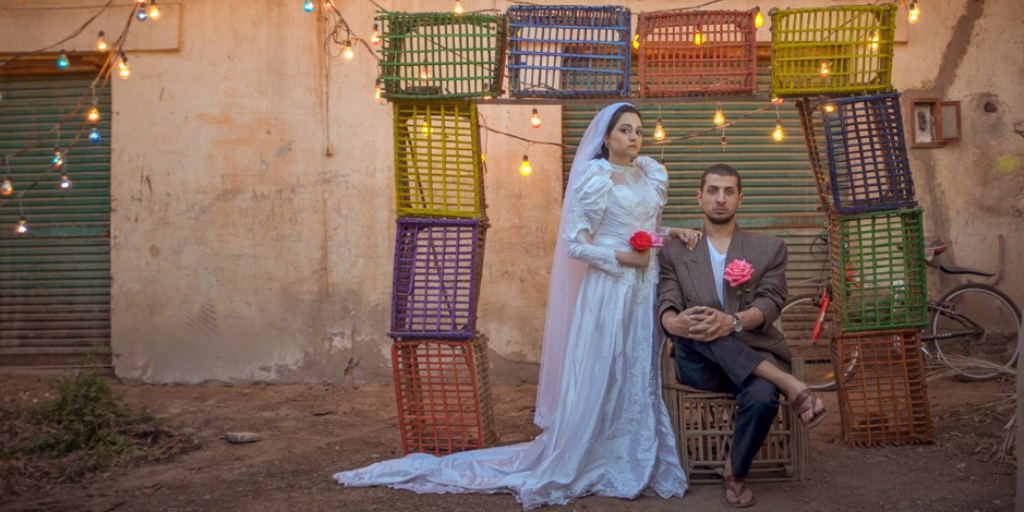
Ahmed El Abi, photographer and Senior Art Director at JWT Cairo, said that since 2011, the Egyptian art scene has rapidly taken strides forward and has received more attention both locally and internationally.
“The revolution was a turning point in our generation and the younger generation, especially in art and being more independent in life in general,” adding that the Egyptian art scene “is really evolving […] and getting more exposure and recognition on a local and an international level.” El Abi particularly stresses that at the forefront of Egypt’s contemporary art scene is street art and photography.
On his part, photographer Eslam Abdel Salam began doing photography after the revolution and seems extremely passionate about his work. Stressing how, when choosing motifs, he tries to downplay his own, individual, being while concentrating on relationships with his surroundings.
“I think less and less about myself and I try to see the relation I have with others around me,” said Abdel Salam adding that photography is “never boring, never one-dimensional and always familiar”.
In response to a question about what themes he usually prefers, he stresses his interest in “identity, the different facets of societies, memory and time-based projects, childhood and family-connections.”
In his work, he tries to capture the contrast between moments of difference and familiarity, while stressing the universality of being human in the world. Also, photography for Abdel Salam is not a passive act of capturing the world around him, but an active intervention. “I try to raise questions with my photographic practice and not necessarily wait for answers.”
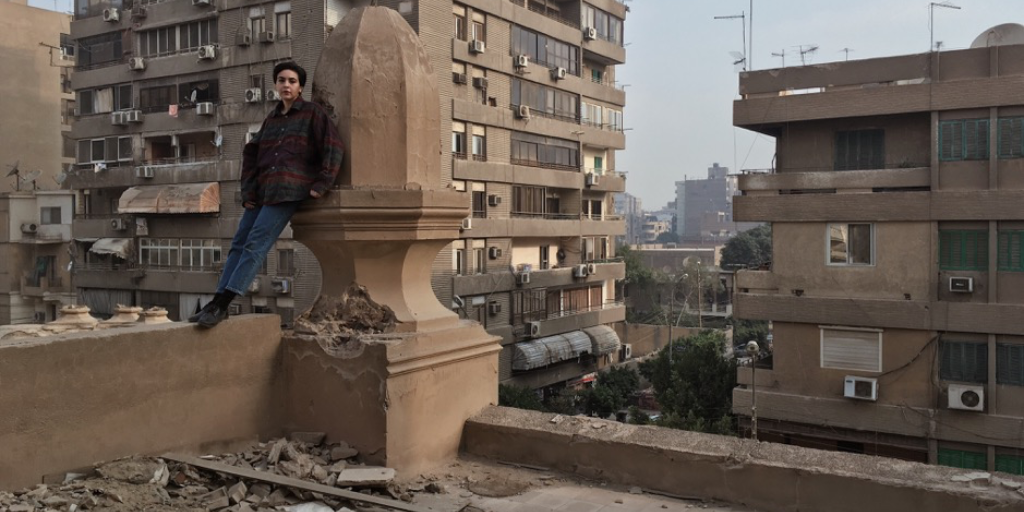
As El side effect and Ahmed El Abi also underscored, Abdel Salam brings up how the interest in photography has exploded in Egypt recently. He also stresses the importance of the revolution in galvanizing an interest in artistic expressions of the transformations Egyptian society was experiencing.
“The courage and freedom it triggered in people and therefore their practice, I feel like the revolution really pushed people into owning their voice and believing in it more. Lots of projects started to unravel its political and social exploration of ideas and questions that couldn’t exist before, even as a notion,” said Abdel Salam.
He also comments on the contemporary art scene in Egypt saying, “it’s galvanizing, exclusive, weird and multi-layered.”
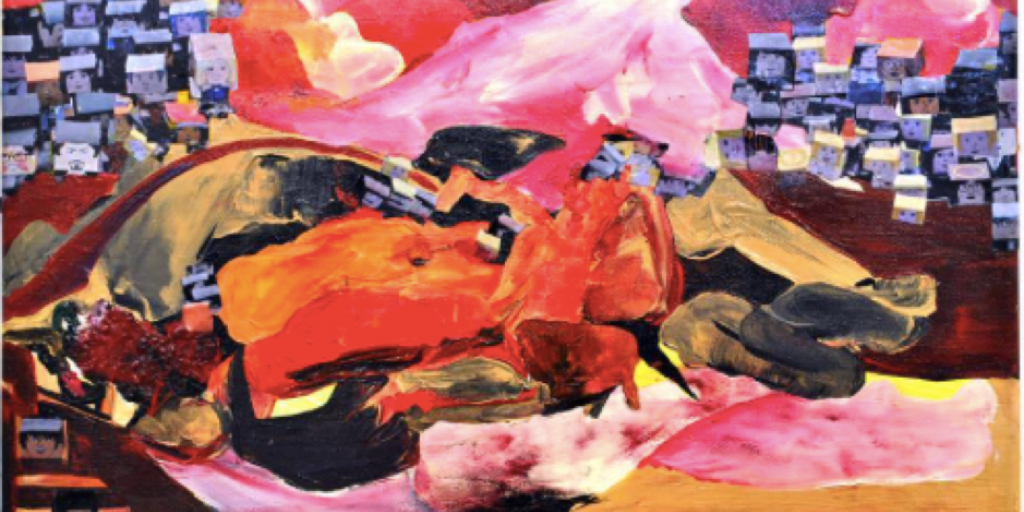
Visual artist Nada Baraka also believes Egypt’s art scene has experienced important developments since the 2011 events and that the public is becoming increasingly interested in art. “The art scene is improving greatly, we have a lot of internationally acclaimed artists that we should be proud of and there are more non-profit organizations and galleries opening than before. There is a new appreciation for art from Egyptians as well, but I still believe that it needs to be part of our daily lives to visit museums, galleries and art spaces,” she said.
At the same time, she nuances the picture of Egypt’s contemporary art scene having only taken positive strides forward lately, claiming that there has been “a rise and fall since 2011”.
“Because, art collectors expected there would be an enormous art movement happening at the time, but very little artists happen to do powerful works at the time. However, we now have more non-profit art foundations such as ASCI, Medrar, CIC, D-caf and Townhouse that play a major role in the art world in Cairo, while some opened and closed such as Beirut. However what I substantially noticed is the growing industry of art centers, my only problem is many of them are not qualified enough to teach but at least more and more people are participating in the art world,” Baraka points out.

Comics artist Mokhtar Zein on his part is adamant to stress that the Egyptian art scene changed fundamentally in 2011. “Art is a means of expression so after 2011 its content of course changed. In my field, comics, the genre of adult comics appeared […] and more people became interested.” Zein describes this development as a process whereby “everything was born anew, even the people, not just art.” Stressing the optimism that the revolt bore with it in 2011, Zein said, “all of us thought that we could change everything and anything and this, of course, had an impact on artists and how they work.”
Zein concludes his comments underscoring the growing interest in art among the public. “People want to paint, to learn how to paint, and many want to do photography, graffiti and many new music groups emerged, even in acting the same thing is happening and in cinema, and this is all very promising.”
Egypt’s contemporary art scene is no doubt experiencing interesting developments. A pertinent question for observers and practitioners alike is whether these developments can be understood as the beginnings of a new, if you like, perhaps ‘post-revolutionary,’ art movement in Egypt. As the Egyptian contemporary art scene remains vividly responsive to political, cultural and social changes, it raises the question of how much these changes have influenced this potentially new art movement.


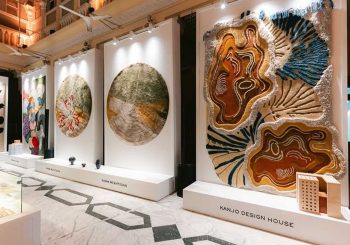

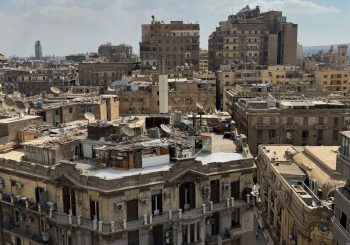
Comments (3)
[…] and several colleges of fine and applied arts and art education. The aftermaths of 2011 have also inspired a new generation of graffiti and fine artists in Egypt, flourishing a new independent art scene […]
[…] Held at Arts-Mart’s spacious gallery on the Cairo-Alexandria Desert Road (next to Dandy Mall), the fair allows art enthusiasts to experience and interact with the cutting edge of the Egyptian contemporary art scene. […]